Okay, seriously. Not to brag or anything, but I just have to say it: I have the best danged dairy cow in the history of the world.
She's so good to me! Not only does she provide me with fresh, raw milk to drink twice daily, but she gives me so much that I'm able to utilize the milk for a variety of dairy goods, such as cheese, yogurt, sour cream, kefir, butter, and fresh cream. She taught me how to make butter.
Sally girl. I love ya.
And because I'm such a stubborn, jump-in-the-deep-end type of person, I've decided to quite buying all of our dairy products and make them instead. Because, seriously, who has a need for store bought butter when their cow is giving 30% cream? Add in a bit of elbow grease, a few minutes of time, and the possibilities are endless.
So, here we are. Just me. A bunch of cream. And dreams.
Dreams of luxurious, velvety, smooth butter.
That's what I think of when I'm hunched up next to Sal's flank at five ‘o clock in the morning. *Squirt, squirt, squirt.* Butter. Lots and lots of butter. *Squirt, squirt, squirt*. Visions of butter dance through my head while Sal and I finish our morning routine of listening to Christmas music on my phone and having a morning chat with God. I must admit, I've grown quite fond of our morning time together. The earth is still quiet. And dark. And cold. It's kind of a beautiful thing.
But that is not the point of this post.
This post is all about the butter. Cultured or uncultured. Salted or unsalted. Just as you'd like it.
How To Make Butter
You will need:
– Fresh cream (raw is best), preferably from your dairy cow named Sal
*If using store-bought cream try and find organic, grass-fed cream (NEVER ultra pasteurized)
– 1 tablespoon buttermilk (reserved from previous batches of butter OR organic, cultured buttermilk from the store)
1. If you're using farm fresh cream from your cow, you've got to separate the cream from the milk – this is easy enough to do as the milk naturally settles and the cream floats after just a few hours of refrigeration. I use a turkey-baster and simply suck up the cream off the top, usually leaving about 1″ of cream on each gallon of milk for flavor (ain't no need to be greedy, man).
(Georgia's drinking the cream… stinker…)
2. Combine the cream and buttermilk together in a bowl. Let sit at room temperature for eight hours. This is the “culturing” part of cultured butter and is a process of fermentation. During the culturing, bacteria converts the milk sugars into lactic acid. The result is a much more flavored butter. It makes it… well… more “buttery”.
3. Pour in your stand mixer, food processor, or blender. Turn it on medium and allow the cream to whip. It'll start to look just like whipped cream – that's just what we're looking for! But then just keep it going!
Here's a breakdown:
Cream.
Whipped cream.
Thick whipped cream.
Lumpy whipped cream that will start to flick drops all over your counter.
Weird, funky, chunky looking whipped cream.
Liquid with bigger chunks that no longer resembles whipped cream.
Large chunks of butter floating in milky liquid.
Shazzam. Fat from heaven has been created.
4. Remove the butter chunks from the bowl and knead together to combine. Run under cold water and massage and knead the butter for three minutes, or until buttermilk is no longer running out of the butter. You'll notice that the buttermilk has a milk-like-color and it's important to get as much buttermilk out of the butter as possible, as this will cause it to spoil quickly. Often times, I'll stick my entire slab of butter in a bowl of cold water and just massage it gently. Then, I'll dump the water out, refill the bowl back up with fresh water, and continue to massage until the water stays clear.
5. At this point, the butter can be eaten, salted, or frozen. I simply wrap my butter ball up in a small piece of parchment and tuck it into a bag in the freezer for preservation. I'm stocking up! Girlfriend can't ever have enough butter stored up. Especially with the holidays approaching!
In all fairness, the first time that I made my butter, I thought I'd done something wrong. It took longer than I originally anticipated and I totally thought I'd messed it up somehow. But fear not, my friend. If you're starting with cream, you really can't mess this up. Just be patient! It'll get there.
And please note (seriously. go grab a pen. write this down.) I've found that the cultured cream turns in to butter much faster than if I'm starting with uncultured cream. It still takes me about fifteen minutes to mix up but thankfully I've got my handy mixer to do all the work for me! So active participation on my part only involves pouring the cream into the mixer, turning it on, covering it with a towel (to avoid it splashing all over my counters), and peeking in on it every couple of minutes to see if it's ready.
Normally, I'll just mix it up while I'm washing up lunch dishes or something. I'm already in the kitchen anyway. Always. In. The. Kitchen.
But if butter is what comes out of my time spent in there, than I certainly don't mind it.
It's butter, baby! Cultured. Flavorful. The fat of heaven.
Here's my video on how to make butter, for those visual-learners out there:
https://www.youtube.com/watch?v=3B3VQe418gk
How To Make Butter
Easy. Luxurious. Real. Butter.
- Fresh cream (raw is best (If using store-bought cream try and find organic, grass-fed cream (NEVER ultra pasteurized))
- 1 tablespoon buttermilk (reserved from previous batches of butter OR organic, cultured buttermilk from the store)
- If you’re using farm fresh cream from your cow, you’ve got to separate the cream from the milk – this is easy enough to do as the milk naturally settles and the cream floats after just a few hours of refrigeration. I use a turkey-baster and simply suck up the cream off the top, usually leaving about 1″ of cream on each gallon of milk for flavor .
- Combine the cream and buttermilk together in a bowl. Let sit at room temperature for eight hours.
- Pour in your stand mixer, food processor, or blender. Turn it on medium and allow the cream to whip. It’ll start to look just like whipped cream – that’s just what we’re looking for! But then just keep it going!
- Continue mixing until it is large chunks of butter floating in milky liquid.
- Remove the butter chunks from the bowl and knead together to combine. Run under cold water and massage and knead the butter for three minutes, or until buttermilk is no longer running out of the butter.
- At this point, the butter can be eaten, salted, or frozen. I simply wrap my butter ball up in a small piece of parchment and tuck it into a bag in the freezer for preservation.

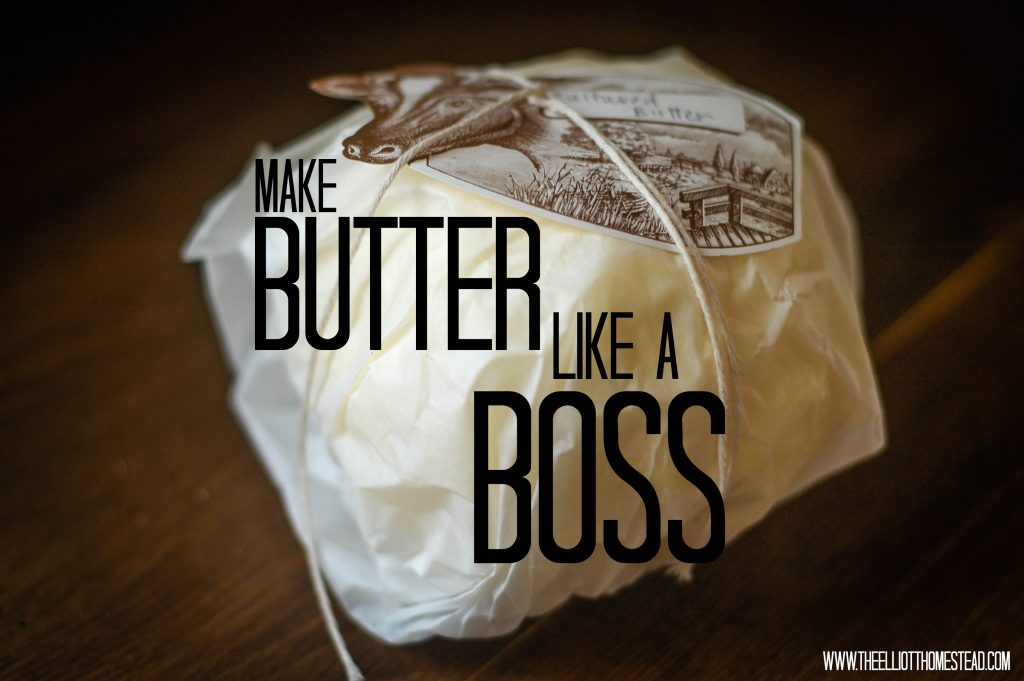
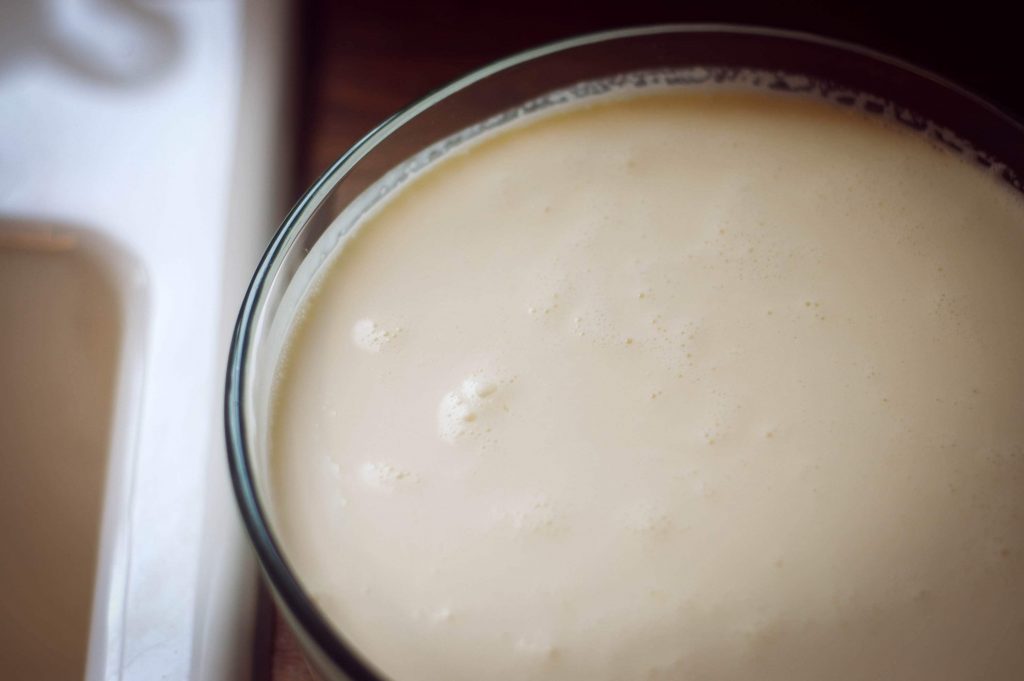
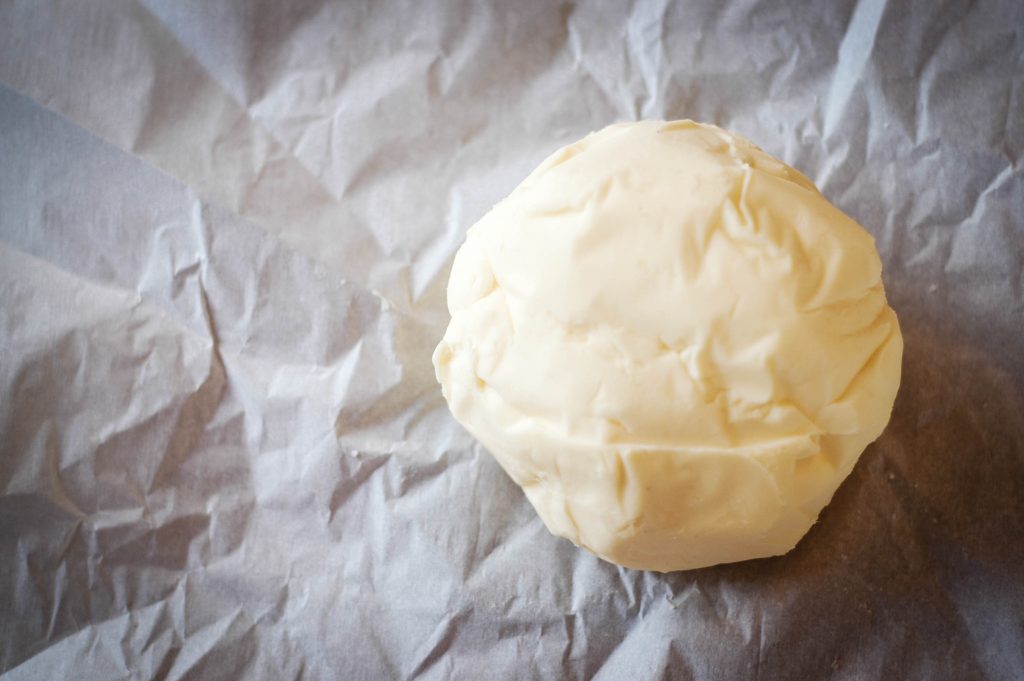
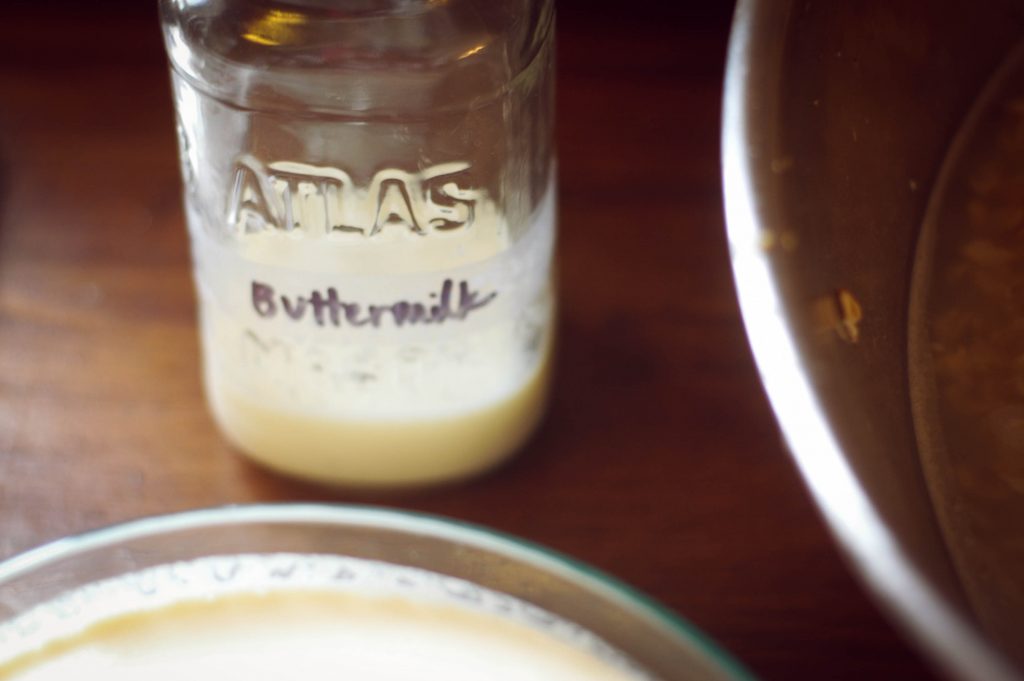
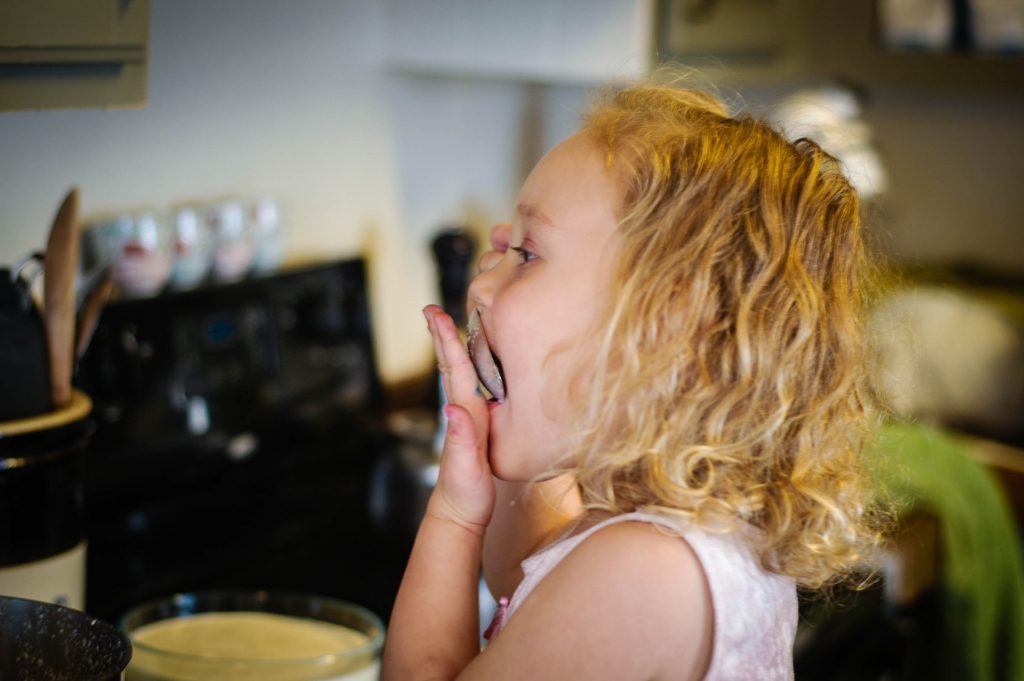
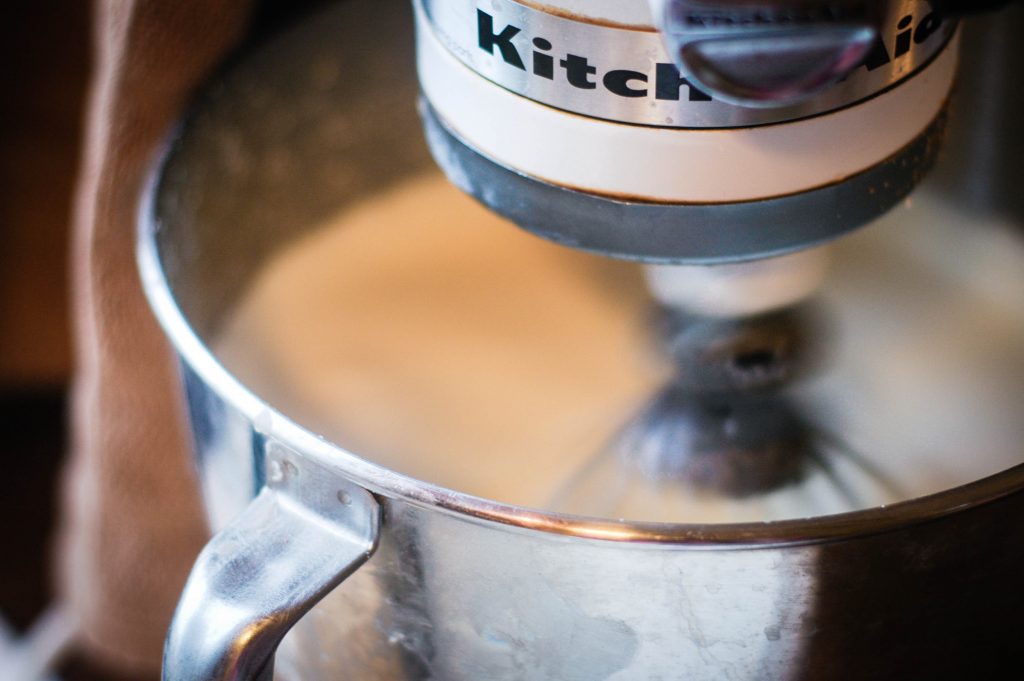
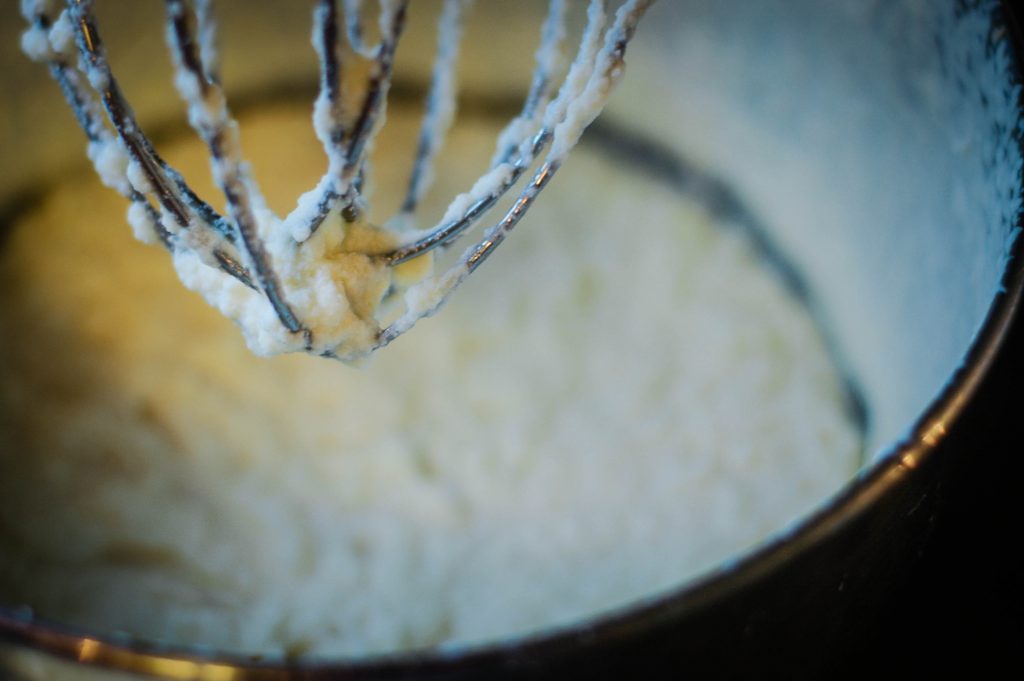
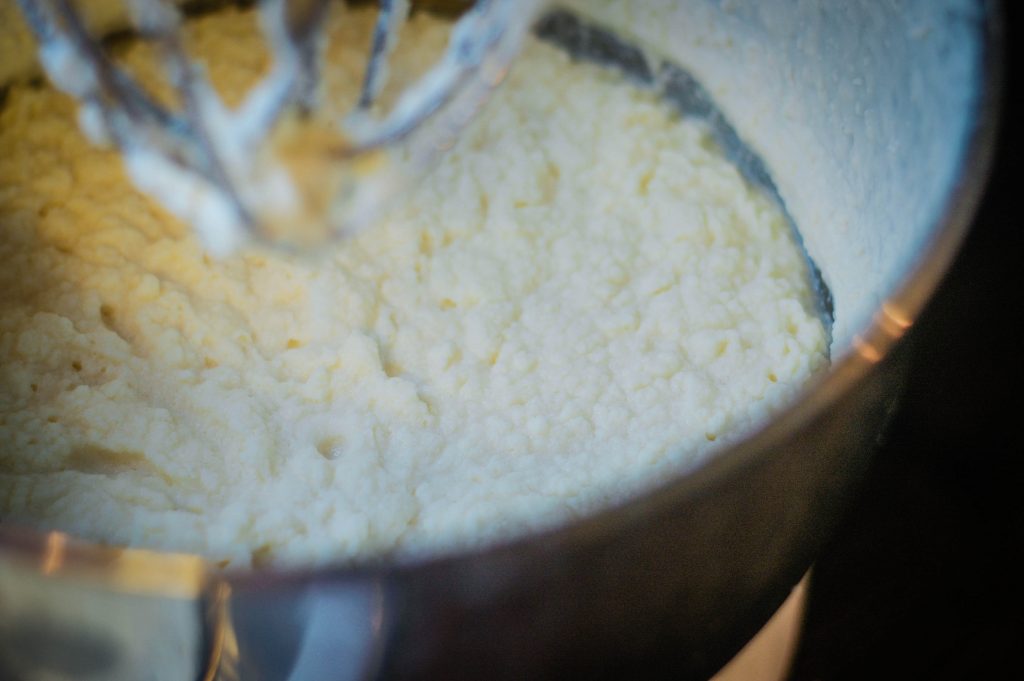
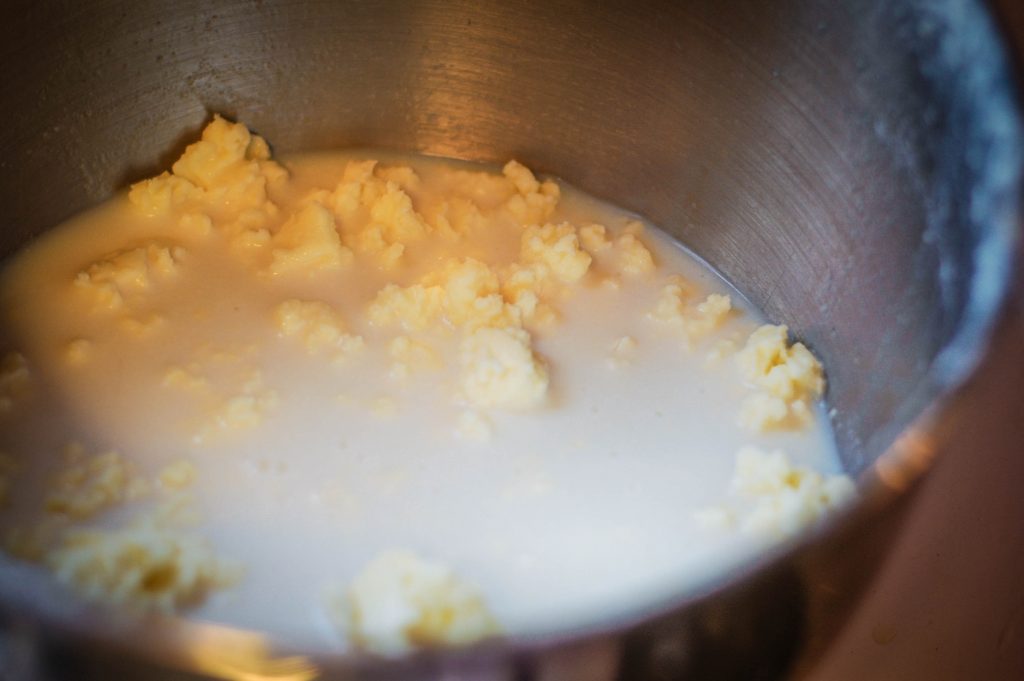
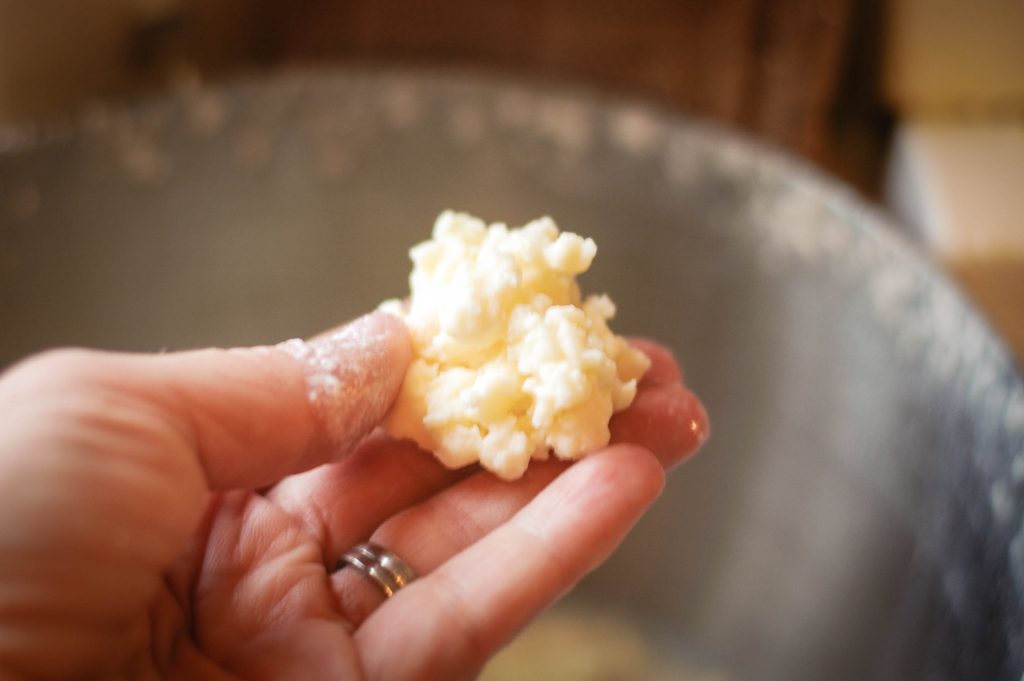
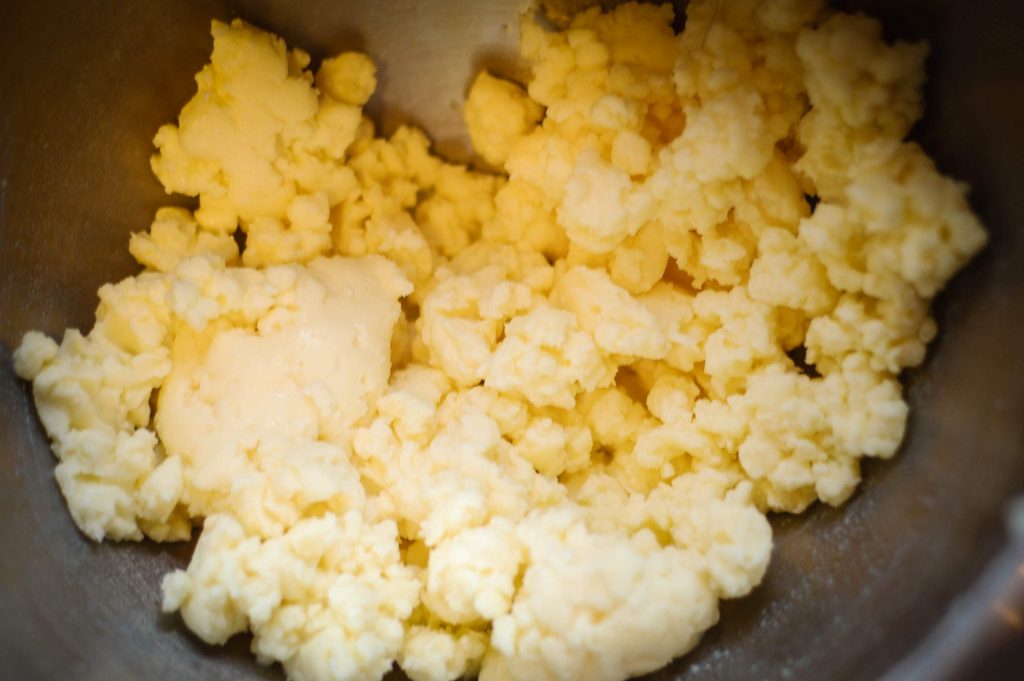
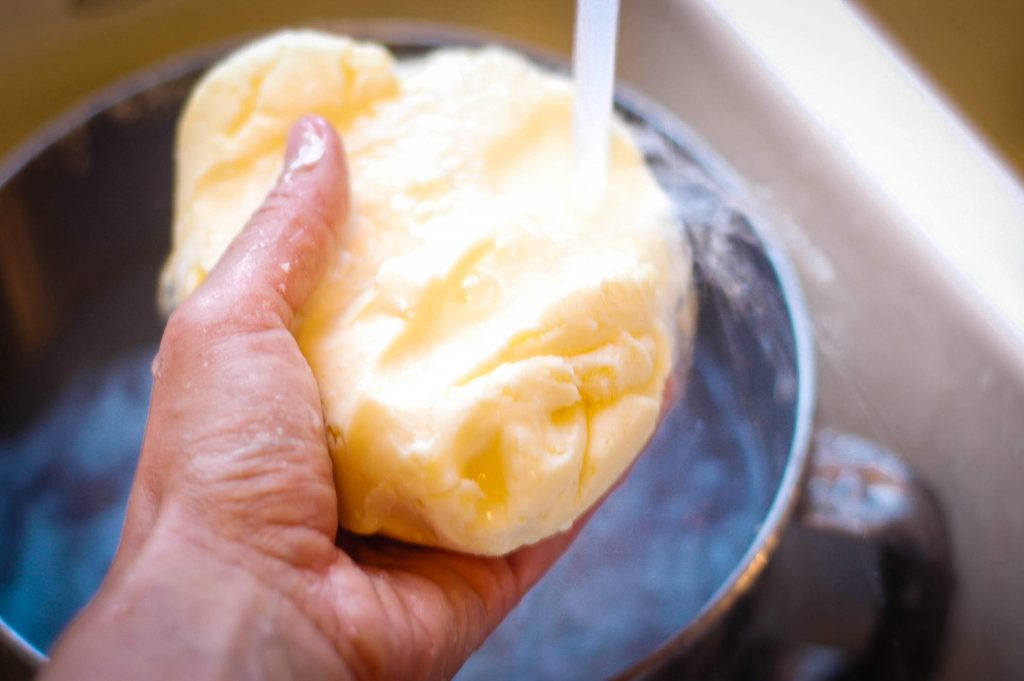
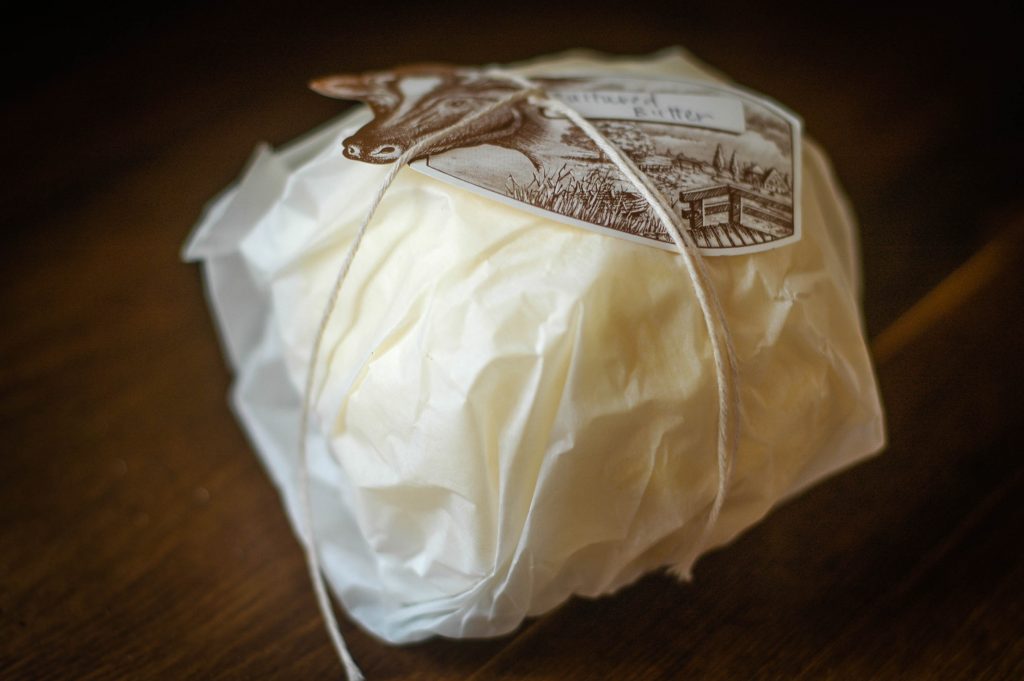
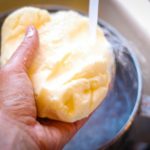
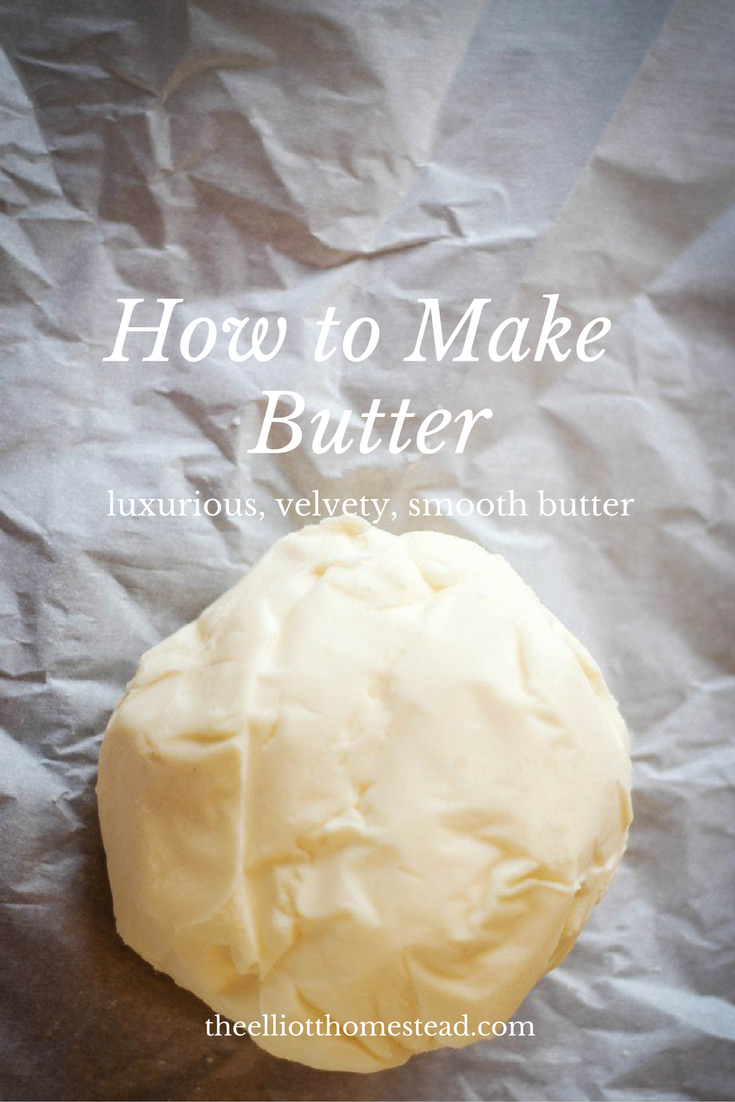
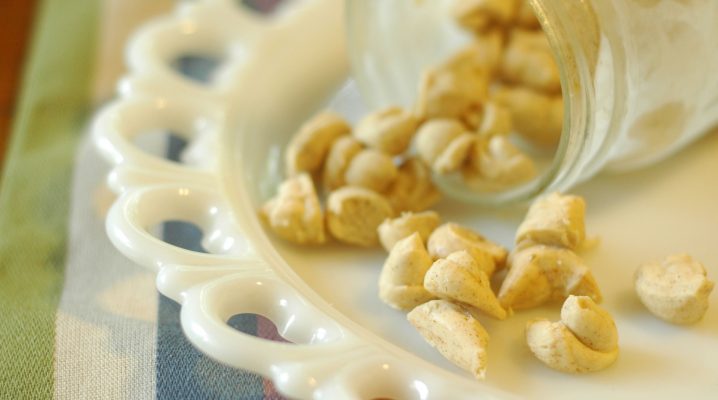
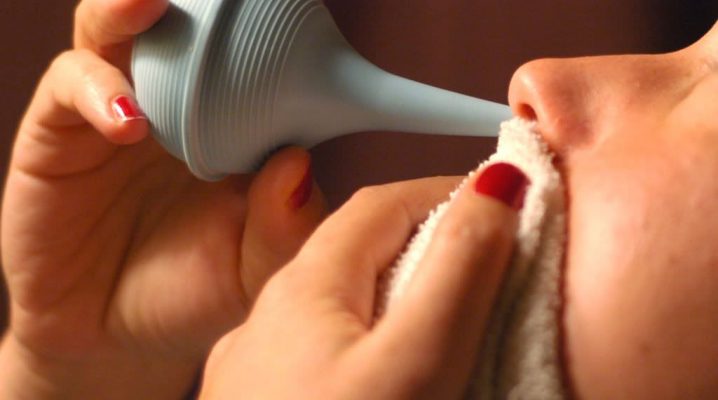

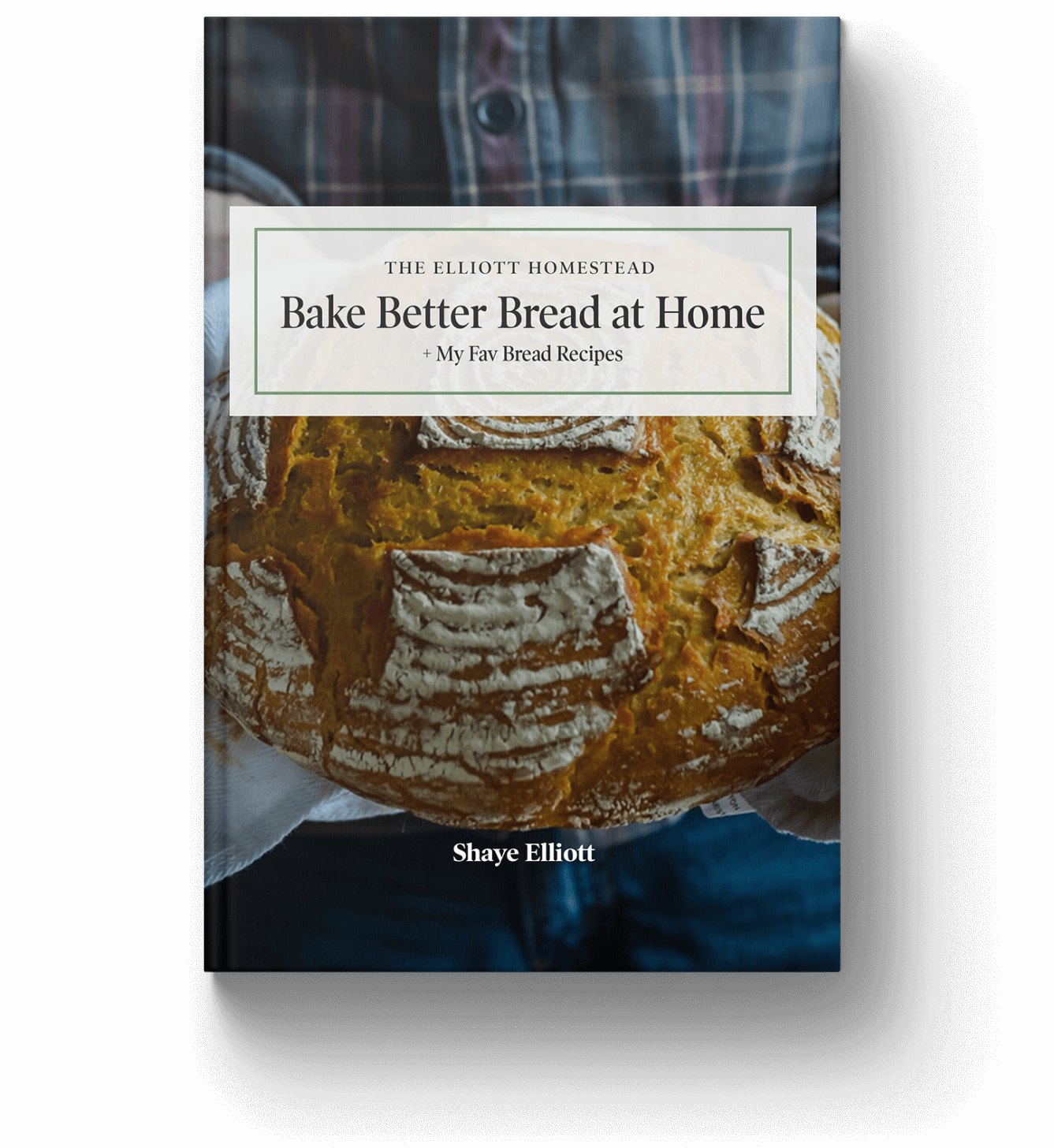
turkey baster. so useful. never thought of that one…gonna have to try it!
That looks awesome! (Do you know anyone in south Puget Sound who sells homemade butter? You, perhaps?)
So my question is this. How do you get cultured buttermilk? I get how you get buttermilk from making butter, but how does it get cultured?? (not that I am lucky enough to have a Sal of my own, just so curious)
I reserve a bit of buttermilk from each butter batch to culture the next batch! Once your first batch of cream is cultured, the resulting buttermilk from making the butter will be cultured as well. It’s a continual, beautiful, cycle 😉
I’m hesitant to let the cream sit on the counter for 8 hours.
My husband has a real sensitive stomach. The only dairy he can digest is raw milk yogurt that I cook for 24 hrs in a yogurt maker. He is super sensitive to spoiled food….
Thoughts?
Can we make butter from local pasteurized milk??😋
How can we culture the buttermilk?
I love fresh butter!! We don’t get that much cream for our Highland/Jersey right now so I mostly save it for my morning coffee but after she has her next calf, we will be enjoying it again. And yes cultured is so good and turns so much faster. Using my blender I can make butter in literally under a minute. Now when we use the hand churn that I grew up with…well, it takes quite a bit longer!
Sweetheart! How do you make butter in blender? What speed? How long? What type of blender? I have Blendtec, VitaMix…Thank you!!!
Terrific! I currently make butter the same way but without the culturing part, I will start doing this from now on as it will save me from having to buy a special culture and I do love to save cash when I can! We are getting a gallon a day from our jersey (we’re milking sharing with her calf) and the cream we get is amazing. The next thing is having a bash at cheese….
cream always whips up faster if its allowed to come to room temp first
Amazing life! Please don’t mind me if I live vicariously thru you till it’s my turn to live the dream 😉 thanks for sharing so beautifully!
I hope we can come visit soooooon! <3
PLEASE DO!!!! I’m going to put Alex to work milking the cow and you and I can get busy making cheese! 😉 We love y’all and can’t WAIT to see you again.
How long does the buttermilk last? We don’t have a cow, but I’m starting to buy raw milk from a local dairy. I’m curious to know how long I can keep the butter and the buttermilk in the fridge. I’m buying some milk today! Would LOVE to try the butter at home this weekend! YUMMO!!! Looking forward to not having to buy the stuff at the store!
Thanks for sharing!!!
Amber, I believe the buttermilk will last for a few weeks. I freeze my butter and then move it to the fridge when I’m ready to use it. I keep it in the fridge always. It’s difficult to get all of the buttermilk out when doing it by hand and so to keep it from spoiling too quickly, we keep it cool. Good luck this weekend!
How much cream do you use with the buttermilk?
I’m not really sure on the buttermilk… a few weeks, perhaps? I’m getting ready to make buttermilk pie with mine tomorrow. YUM!!!
How long do you think the butter would remain good in the freezer?
Years? I have no idea… mine never lasts that long 🙂
So maybe a dumb question, but, what if I can’t find cultured buttermilk from the store? For that first batch of butter can I forgo adding the buttermilk and then next butter batch add the buttermilk from my initial first batch of butter? I will be using raw grassfed cream skimmed from my milk! 🙂 Also wouldn’t the butter be okay if left at room temp because of the live cultures in it? Thanks! And love reading your blog!
Megan, my first batch I just didn’t use the buttermilk and then saved the buttermilk from that initial batch. Cultured buttermilk from the store has so many ingredients – it’s pretty nasty stuff. It’s really difficult to get all the buttermilk out so it will spoil quickly at room temperature which is why I stick ours in the fridge. A small amount out at a time would work well though! And thanks for reading 🙂
Hi, i was making butter with cream. After it released buttercream i still whipoed it and now the butter has all the buttermilk. What do i do? Can i have my butter back somehow
As someone who will likely never milk a cow in her life or make butter from scratch, this post was gorgeous and delightful. Thank you for sharing the beauty that is “fat from heaven.” The pictures made me want to rub bread on my screen. Seriously, that was amazing.
I’m curious why you have to mix with the buttermilk to get it to culture? We just got a cow share and are LOVING our milk. So was reading about making butter. In the book I have, Nourishing Traditions, it says to just leave the raw cream at room temp and this cultures it. Just curious your thoughts for adding the buttermilk. Thanks!
Do you use 1T of buttermilk, no matter the quantity of cream? I let mine set overnight and made it this morning. I used 4c cream and the 1T buttermilk. Turned out good, but a bit more spreadable consistency than I thought.
Also–how much salt (if desired)?
You’ve taught me so much!
Love this thank you so much for sharing your knowledge and experience with us. God Bless you and Sal.
What kind of cow is Sally? We (read, ME) are researching dairy breeds for when we finally find that perfect piece of property.. It would be a family cow only, so does not need to be a giant producer, and we rather like the small-breed cows..
She is a Jersey.
Leslie, have a look at Milking Devons. Butter from their milk is magnificently yellow. http://www.milkingdevons.org
I WANT A COW!!! Can’t get grass fed dairy products here in Canada….
1 T buttermilk to how much butter and how do you salt it and how much salt please.
I use the cream of two gallons of milk per tablespoon of buttermilk – this is usually around 1/2 gallon of cream. I never salt mine so I’m unsure about the amount you’d need – I would guess about a teaspoon or so.
I think if you don’t have access to buttermilk for the first batch, one can make the first butter the regular way and keep the buttermilk from the process for the next batches right? I used to have access to fresh milk (already stripped of its cream mostly) to make yogurt and used to take the cream of yogurt to make a tiny bit of butter inside a jar. It used to taste divine! Can’t wait to get a fridge so I can start making yogurt and butter again.
Yep – just make it without the buttermilk the first time. No biggie!
Do you still have to let the cream sit out for 6 hrs
Thank you for writing such an informative and funny blog. I have a question that I have no idea if you can answer… I’m sadly lactose intolerant and don’t own a cow, (really, where would I put it in our tiny flat? I hear my man say, Oh but one day! I answer) so whenever we want butter (and we are slowly moving away from margerine) I make it from lactose free cream from the store. It is amazing, nothing like anything straight from a cow (which I have tasted several times as a child and still dream about), but still very, very good. the colour and taste even varies according to the season, just like the ‘real deal’. Oh the question, right: Is there any point in leaving the cream out to culture, when it doesn’t contain any lactose?
By the way, In case anyone is wondering, yes, I still dream of getting a cow in spite of the intolerance because a) I pray that I will some day be healed from it, b) some lactose intolerant people can tolerate milk with lactose straight from the cow and c) you can remove the lactose at home with enzymes, just like they do on a commercial scale.
I really am unfamiliar with lactose-free products so I have no idea! Best of luck, though!
Hey wouldn’t it be neat if they bred sub miniature Jerseys that would give a qt of milk a day after grazing on your organic 10ft by 20ft urban lawn! We eat a lot of virgin coconut oil which is a fair substitute for butter but really there is nothing like butter spread on warm home made whole wheat bread! Thanks to my wife LaRenne!
I’ve read other cultured butter recipes that substitute 1/4 cup whole unadulterated yogurt for the 1 Tbsp buttermilk (although the buttermilk from a previous batch is also listed as a potential inoculant). Would you agree or disagree?
I can’t say, Sarah. I’ve never tried it!
Okay, I have to say something. I found your blog today and now all I want is a cow named Sally, a farm, butter, a little more butter, your whisk attachment, and some more butter. Your pictures are beautiful, your blog is SERIOUSLY professional looking and purty, your child is beautiful, and you are one convincing woman. I think I’ll peruse around the site a little longer, pray for a cow named Sally, and hopefully make some butter soon. Thanks for the recipe!
This made me smile, Margaret Anne 🙂
Hi Shaye! Thanks so much for this detailed post, you’re making me rethink my decision to go for Nigerian dwarfs over a jersey. Was scared I wouldn’t have time to use up all that milk/cream, but you make it look easy! Oh and please tell me where you got those cute cow labels! Thanks!
So you start with regular ‘ol fresh raw cream skimmed off the milk and make that into butter, with no cultures in the cream whatsoever, and then use the buttermilk from that butter to “culture” your next batch of butter? Sorry I’ve read through all the comments and I’m just a little confused because you said “I reserve a bit of buttermilk from each butter batch to culture the next batch! Once your first batch of cream is cultured, the resulting buttermilk from making the butter will be cultured as well. It’s a continual, beautiful, cycle ” And from that response it seems like you start with cultured cream? Maybe I’m being dense. Sorry I know you have more important things to do like tend to kids and farmlife but just wanted to clarify as I have made butter but still not sure how to culture it properly. 🙂 Love the blog!
Yes! Your first batch of butter you make just do no cultures – start with regular ‘ol cream. Then, from that batch, keep a bit of buttermilk and culture the next batch. Thanks for reading, Megan!
Ok, I have made 2 attempts at butter from our jersey’s raw cream. It would be sweet cream butter as I have not cultured it yet. It keeps going to a very fluffy?!?froth texture. I could not knead mine like you did in your video. Also it is not yellow at all? she has just been put out on pasture though. Am I not whipping it long enough? I shook it in a jar after last nights failure. It never separated like in your pictures. HELP!!! ANy suggestions?
Yep – sounds like you need to whip it further. Mine usually takes about 5-10 minutes PAST that frothy stage you’re talking about. Also, try letting it sit for a few days in the fridge. Older cream churns better.
I’m getting my whole raw organic milk from a local farmer up the road. Jersey ladies they are 🙂 I’m now hooked on making butter and buttermilk (both kinds, lumpy and smooth, so to speak). No more store bought for me! Thank you for the tip that older cream churns better. And thank you for you post and the very helpful video! All the best to you and your family on the farm!
I wonder if you could use your electric mixer to help with the process of getting all the buttermilk out of the butter. You may have to change the water a few times so that it stays cold, but it seems as if the mixer would help beat out the milk.
where did you get your adorable cow tags!?
why not ultra pas? I think OG may be pasturized but UP….
Can you freeze the cream from the raw milk till you get enough to make the butter at one time?
Thanks
I’m not sure – I haven’t tried to freeze any.
I don’t have access to fresh cream. If I go the store route, what should I buy. Is it the heavy cream?
Thanks!!
Yep!
Just came across this and can’t wait to try it with our own beautiful milk, but PLEASE do tell where you got those GORGEOUS labels!!! Thanks in advance 🙂
I can’t even remember now… I’ve had them forever…
How funny – I just got on to check details again and here was your answer! My butter’s a-churnin’ right now in the mixer!
I would buy a scan of that label and I bet others would too…hint, hint 🙂
More thanks in advance 🙂
What speed do you run your mixer on? Mine has been going now for over half an hour on speed 5/6. Thanks!
Growing up we put our cream in a mason jar and shook the heck out of it! 6 kids and we took turns. It was delicious but something we always had so we didn’t think anything of it I guess!
That butter looks amazing! I didn’t know you could just wash the butter under the faucet with your hands like that. I thought you had to whip fresh water into it (using a blender or food processor or mixer etc) and pour it off when it gets cloudy. Keep repeating until clear. Going to have to try the kneading by hand under the faucet method!
I wanted to know if the cream you used is the same cream that can be collected after boiling milk. A heavy layer that settles on top after it boils and cools down.
Nope – this should be fresh cream.
So I made my first batch of uncultured butterand the first batch turned out tasting well but was very unspreadable. Will culturing it make it more spreadable if not what do I do?
If you were to add salt at the end, how much and what kind?
You say to NEVER use Ultra pasteurized cream. At the moment, with no access to raw cream, that is all I have. What will it do?
CAN YOU PLEASE SIGN ME UP FOR YOUR NEWSLETTERS.
We just seem to be getting really hot cream, what are we doing wrong? Are we running the blender to fast?
Hi,
I have made your butter twice now. It’s great. The first time I poured out the buttermilk not thinking, this time I saved it for pancakes…..
do I have to add vinegar or lemon juice as they do with milk? Have not been able to come up with an answer on the internet.
Thank you!
How much cream? I bought a half gallon of organic whole milk will the cream top from that be enough?
Thank you for sharing. I live in South Africa, I don’t have my own cow, but am keen to source some local, raw milk.
Please add me to your mailing list if you have one so I can stay connected and receive your posts.
Thanks, and God bless. 💖🌸💖
Do you still have to let the cream sit out for 6 hrs
Hello! Thank you for sharing your adventures with homemade butter and sorry if this question has already been answered but I couldn’t find it in any of the posts above. If I skip the buttermilk for the first time, do I still need to let the cream sit out for 8 hours? Or can I make my own buttermilk with raw milk and lemon juice??
We have a dairy farm in our place, just a few heads & i don’t know what to do to our fresh milk because we produce a lot of milk more than we can consume. So i’m looking for any ways we can sell it in a form of butter, cheese, & the like so we can have an income out of our fresh milk. Please help me.
People are always looking for somewhere to buy fresh milk, i’m in Ga. And no one around here has fresh milk.
I finally found a place i can buy goat milk but only once a week and it’s not cheap.
Amazing blog! We are bringing our Jersey cow home this weekend. My question is how much cream to the ratio of 1 tbsp of cultured buttermilk?
If we lived closer I am sure we would be friends. We live very similar lives 😊
Home made butter and Ray Lamontagne. Could it get any butta.
Love it
The pictures of the stages so so helpful. I was getting nervous and then bam… butter! Thanks so much